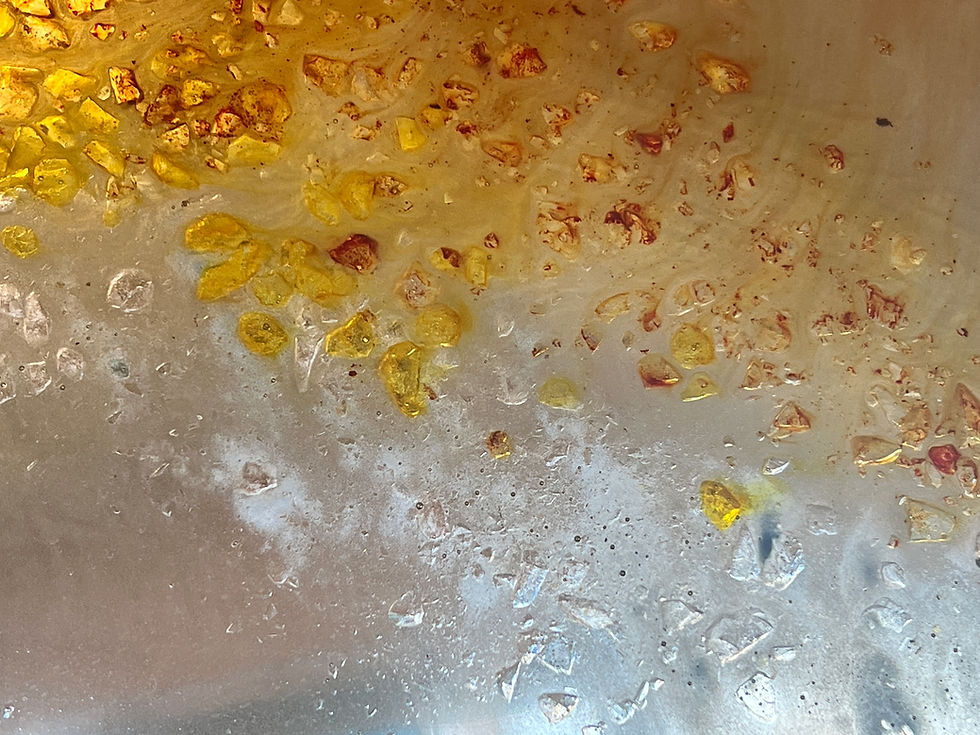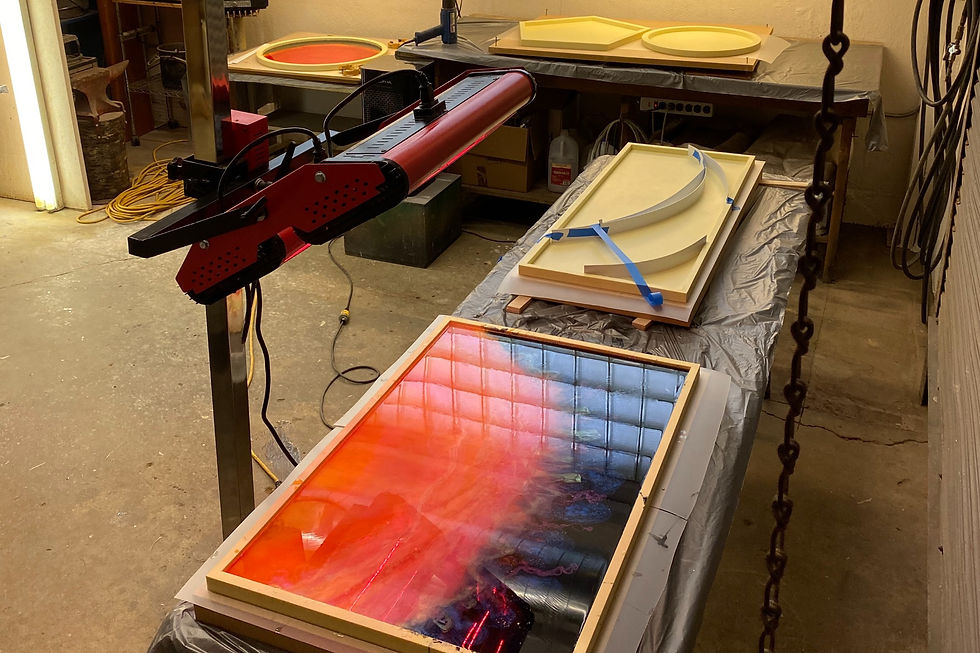The Sistine Chapel of the 21st Century
- Kristen Hannum, Catholic Sentinel
- Aug 27, 2018
- 5 min read

Portland sculptor Martin Eichinger says he learns and grows with every work he creates. But the process is rarely as dramatic as when he took part in creating bronze sculptures for the Stations of the Cross at the newly opened Cloisters on the Platte Retreat Center in Nebraska. The 931-acre Jesuit retreat center has a chapel, seven lodges, nature walks — and the half-mile-long walk through the stations, a length thought to approximate the journey Jesus made to Calvary. The stations and retreat center opened to the public July 23. Eichinger created the sixth and eighth stations (Veronica wipes the face of Jesus and Jesus meets the women of Jerusalem who weep for him). Eichinger, a figurative sculptor (rather than abstract), is one of three artists in the Archdiocese of Portland to contribute to the massive project. While honored to be asked to contribute, the work was challenging for the Southeast Portland-based artist. He isn’t a religious man and confesses some skepticism. Eichinger, therefore, had misgivings about the project. “As an artist, I want to be honest about what I portray,” he said. He didn’t want cynicism to diminish the work. He agreed to attend a three-day Jesuit retreat at the center as part of the creative process. It was there that the unexpected transformation occurred. “Because I went into the retreat self-confident of the moral structure I was living in, I didn’t expect to be changed,” Eichinger said. But he listened. There were talks from the Jesuit priest leading the retreat, followed by hours of silence in which to think. Eichinger realized he could hear the Jesuit retreat leader’s loving insights if he mentally substituted the word “God” with “universe” and the word “sin” with “in violation of the universe.” “It was extremely powerful when I opened my mind to what was behind the words and stopped focusing on what was offensive to me,” said Eichinger. “I was overpowered and humbled. In fact, after three days I was a blithering idiot.” The retreat, he realized, had left him profoundly moved, far beyond the enhanced artistic understanding of the stations he had hoped for. Eichinger’s experience was exactly what the retreat’s creator had hoped for. Billionaire Joe Ricketts, founder of Ameritrade, wanted the Cloisters to base its retreats on the spiritual exercises developed by St. Ignatius Loyola, but to be welcoming to people of all faiths. Sculpting the two stations — and that retreat — meant Eichinger was able to reconnect with his father, a conservative Lutheran. His father died in January, “with a satisfaction that I was on the right side of the divide,” Eichinger said. “He called me his prodigal son, and said, ‘Oh finally after all these years my son is coming home.’” It was another well-known figurative sculptor, Lynn Kircher, who invited Eichinger to be part of sculpting the figures. “I’ve known Marty for 15 years,” said Kircher. “I wanted him involved because of the way he’s walked his path, interacted with his fellow man.” The Nebraska retreat center is about halfway between Lincoln and Omaha. Ricketts, a Catholic, told the National Catholic Register that he had been inspired to build the center because of a silent Jesuit retreat that had refueled his faith by teaching him how to meditate and contemplate. He began visiting parishes and lay groups like the Serra Club, urging others to experience a silent retreat. He eventually decided to build a center that would reflect the power of what he had felt. He spent $13.6 million to buy 931 acres and began building. Ricketts has not made public the cost of the development — a chapel, seven lodges (each designed by a different architect), roads, water, sewage and other utilities. It’s basically a small town. And then there’s the half-mile walk through the Stations of the Cross, with its complex array of bronze figures. Kircher, a Colorado-based sculptor and a devout Catholic whose bronze figures are in the Vatican as well as in churches in 14 states and around the world, was the “artist liaison” on the project. He said the nine other sculptors he invited to be part of the project were exemplary artists whose work could tell the story of the Stations of the Cross, making it come alive for believers and non-believers alike. “Making the story come alive was something this group embraced,” said Kircher. “One of the powerful aspects of this is that it doesn’t just use the traditional iconic images but expands them.” The artists all were based either in Colorado or Oregon. Six of the stations emerged from the George Lundeen Studio in Loveland, Colorado, and another Loveland sculptor, Dee Clements, created the tenth station (Jesus is stripped of his garment). Jay Warren of Rogue River created the tableau for the first station (Jesus is condemned to die) and the fourth (Jesus meets his mother). Rob Arps of Portland created the eleventh station (Jesus is nailed to the cross). In addition, Arps is president and CEO of Form, a scanning studio that replaces the old lost wax technology with 3D scanning, digital sculpting and computer numerical controlled milling to transform the artist-created models into the 7-foot figures — or, in the case of Jesus on the cross in the twelfth station, a 10-foot figure. The new technology made the process of creating the finished sculpture about three months faster per figure than could have been done in the past — and allowed the project to grow along with the sculptors’ visions. The planned-for 40 figures became 65. The 10 sculptors first met for three days as a group at the Stanley Hotel in Estes Park, Colorado. There they discussed how they would work together to create a cohesive story through the 14 stations. They would, for instance, all model Jesus’ face on the features of a young Jewish Portland man, said Kircher. They also decided that Jesus would be carrying the entire cross throughout all the stations, not just the cross piece, as some had argued for. Ricketts, as the patron, also had a voice in these artistic decisions. “And we all focused on the need to never lose the context of this being a Jesuit retreat,” said Kircher. “Most projects have a limited budget or scope,” he said. “On this project the bar was set extremely high. So it’s unique.” He recalls when the sculptors met with Ricketts and heard about the billionaire’s vision. “You’re asking us to create our era’s Sistine Chapel,” someone said. Kircher believes that Ricketts is fulfilling St. John Paul II’s call for the church to recommit to its age-old support of the arts. “It’s overwhelming to be a part of it,” said Kircher. “Every artist picked up the gauntlet to do the best work they’d ever done. The project brought faith alive to a lot of the artists — and the construction crews and vendors.”




Comments